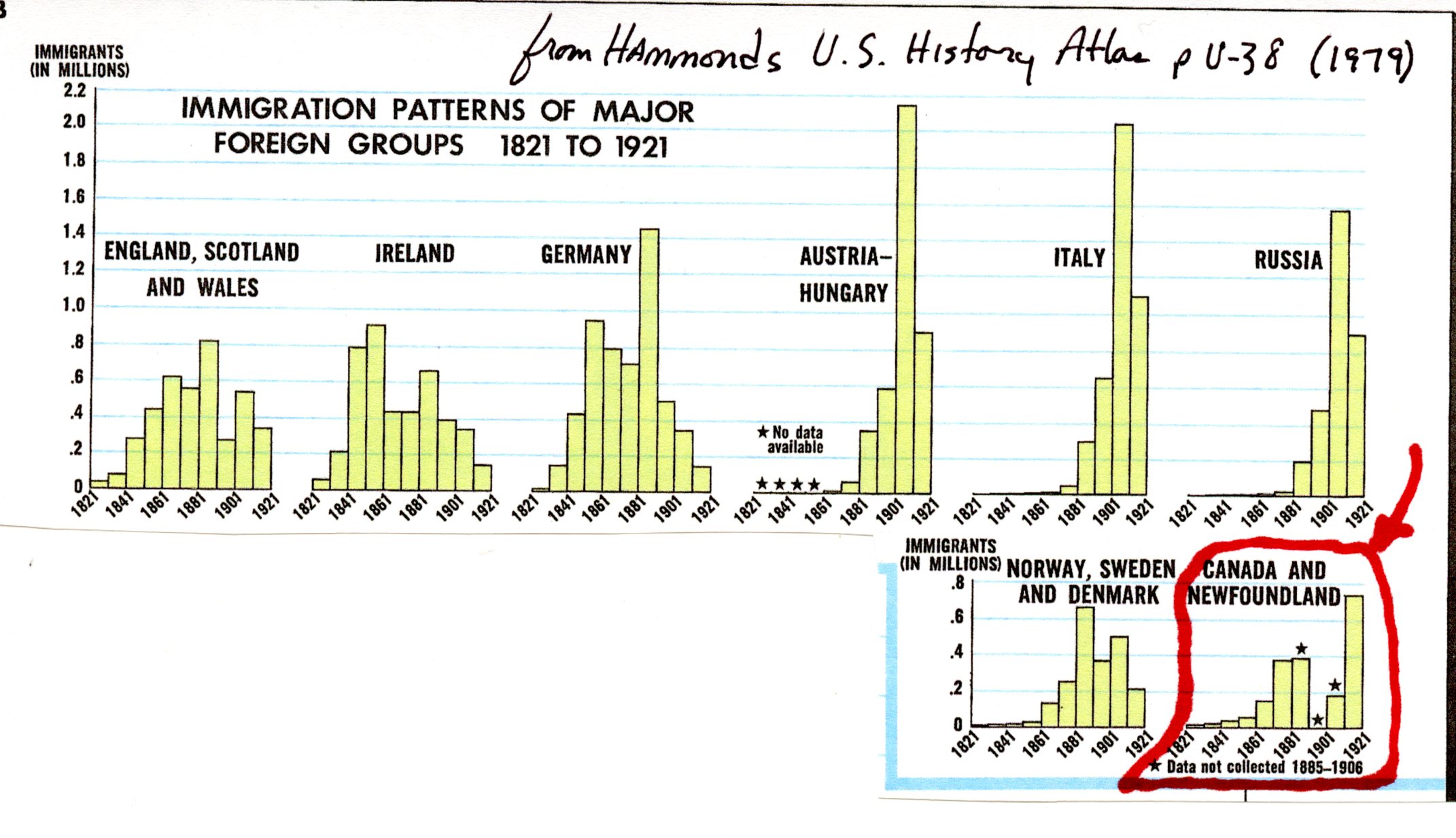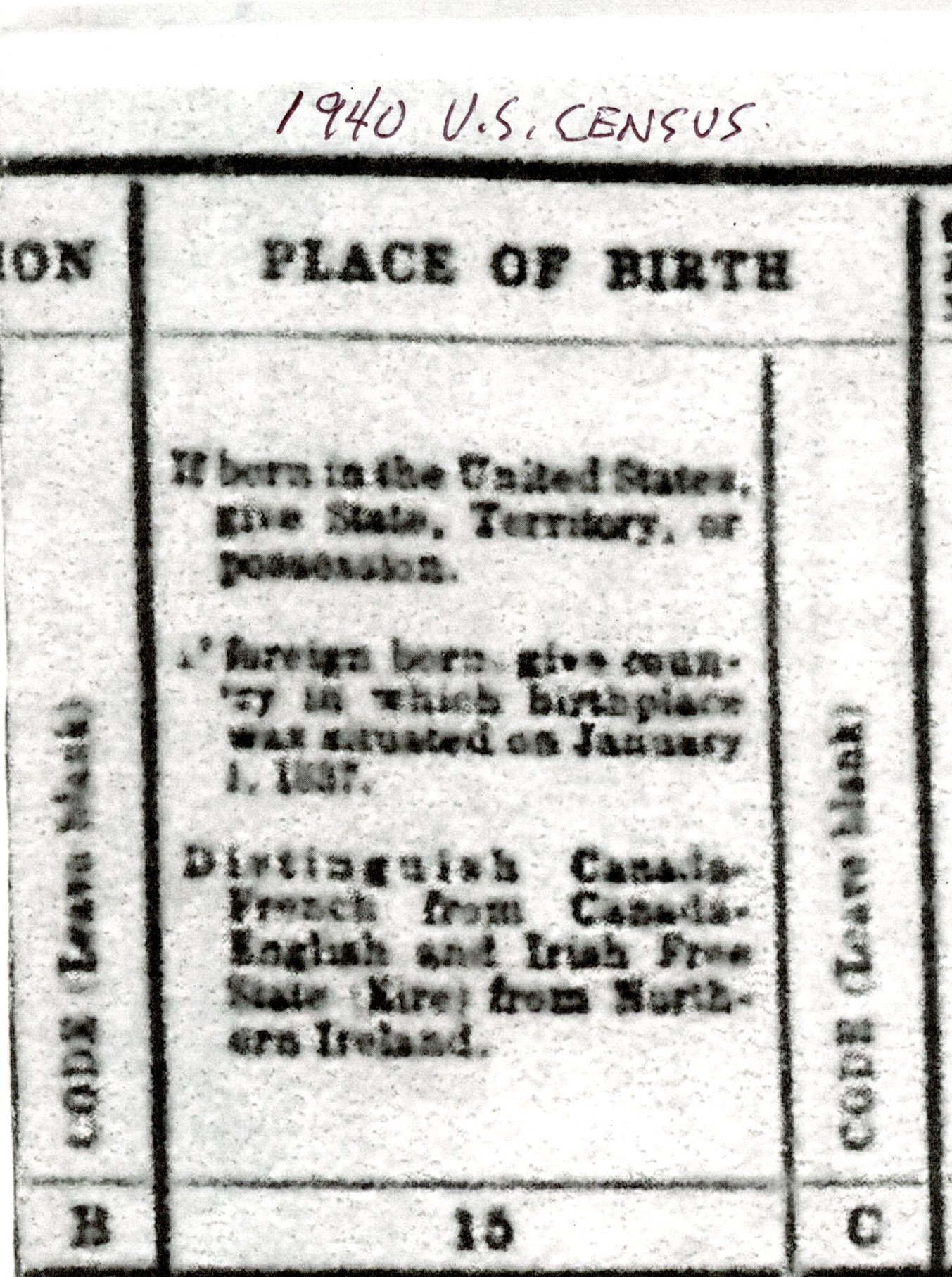Immigration from French Canada
This is a companion to the April 21 post, entitled Getting There. There have been some additions to the earlier post, as well as a couple of comments.
The 1980 U.S. census had a question about the ancestry of citizens. The report showed that 7.9% of Minnesotans, 321,087 people, had French descent (from France and Canada).
A rough extrapolation to today would mean that there are 450,000 or so Minnesota’s whose roots include French DNA. “So what?”, you say. “Americans”, of whatever lineage, are rarely 100% of any nationality. Their heritage, French-Canadian or whatever, carries elements of the heritage and culture, in all its complexities.
Here’s the 1980 data by state: Immigration History French 1980 census. (Apparently this was the last census to ask this particular question. The graphic and data are from an early French in America calendar published primarily in the 1990s by Dr. Virgil Benoit of the University of North Dakota).
As a part of the whole, the French portion of the American immigration history is relatively small. Part of this doubtless relates to the fact that the French were defeated by the English in Canada shortly before the American Revolution. I recently saw an interesting graphic in a 1979 Hammond Atlas of U.S. History, which is presented here, both in picture and pdf form: Immigration History 1979 Hammond Atlas
Note especially the Red section “Canada and Newfoundland”
Ironically, from 1885-1906 “Data was not collected”. It specifically stands out from most of the other data on the chart. At this writing, I have no idea why this data is absent. It is also the general time period in which a probably substantial portion of the French-Canadian immigration to the midwest took place.
Almost a given about French-Canadian (“Canadien”) immigrants to the U.S. was that they were Catholic. Quebec was settled as a Catholic colony of France. At the Cathedral of St. Paul, there are 6 chapels behind the main altar. One of them is dedicated to St. John the Baptist, patron of the French-Canadians. (For years, the caption erroneously cited the chapel as dedicated to “St. John the Baptist, patron of French and Canadians”. The mistake was caught and changed within the last ten years. French-Canadians referred to themselves as “Canadiens” as compared with other nationalities in Canada.)
The other five chapels are dedicated to other national patron saints: Irish, Italian, German, Slavic, and one “General” for the rest. Ironically, in the biography of John Ireland, the bishop (1888-1918) who built the Cathedral in the early 1900s, there is not a single index entry about “French-Canadian” or “Canadien”. (John Ireland by Marvin O’Connell, MHS 1988). The same is true in the history of the St. Paul Diocese. (Catholic Church in the Diocese of St. Paul by James Reardon, North Central Publishing 1952). This is at minimum an interesting and possibly significant oversight, an example of the Canadiens as a Quiet Heritage.
There is also an interesting question about origin and language.
Some years back I had occasion to look at the 1940 U.S. census form. There were only two distinctions within an individual country of origin, specifically noted on the form. One was for Ireland, whether north or south; the other for Canada, English or French. Here’s the exact question from the form.

We are a nation of immigrants, but there have always been distinctions, fairly or unfairly made, for or against certain nationalities.
What is your story?
from Remi, April 29: A story about travel from the east about 1851: Immigration from the east ca 1851

Leave a Reply
Want to join the discussion?Feel free to contribute!